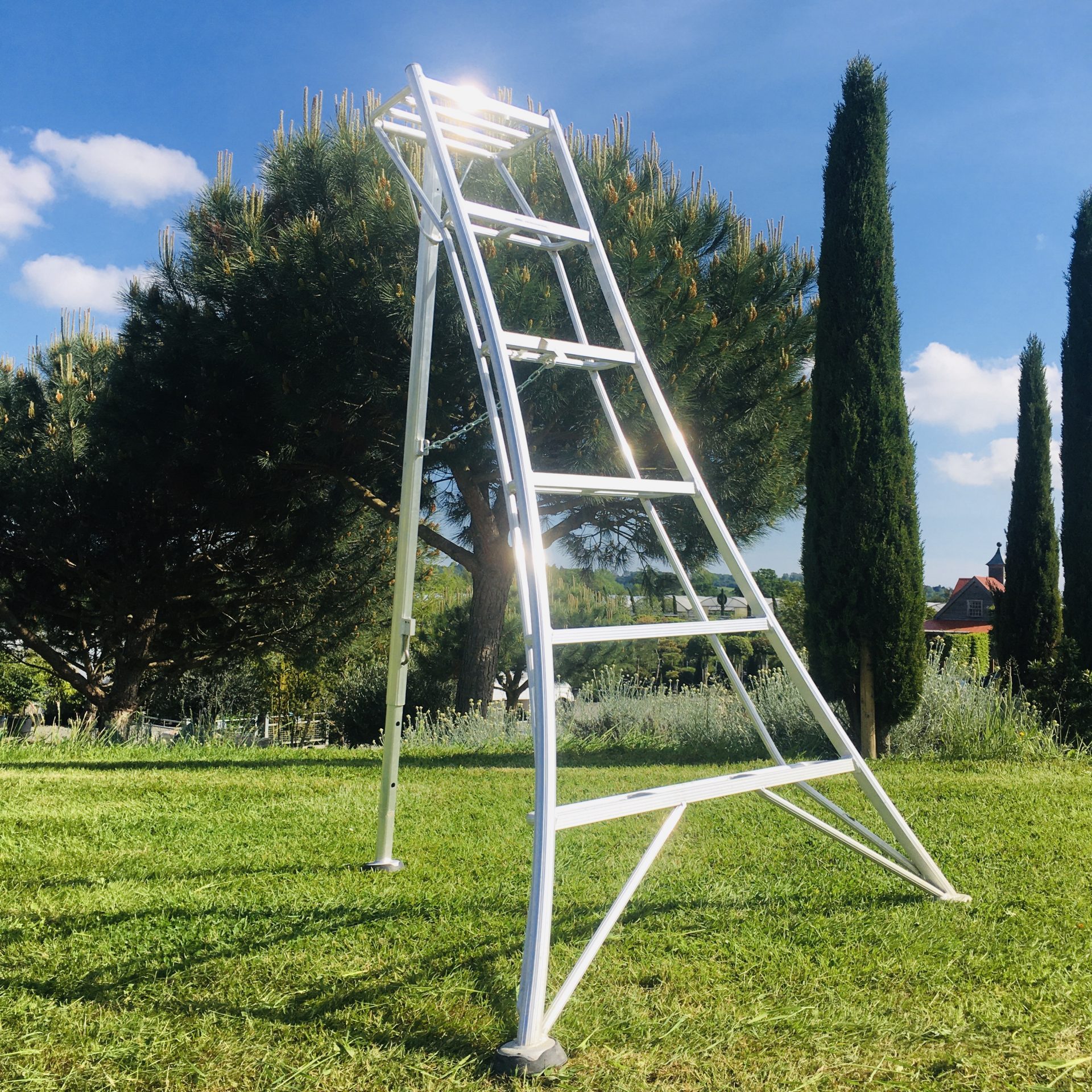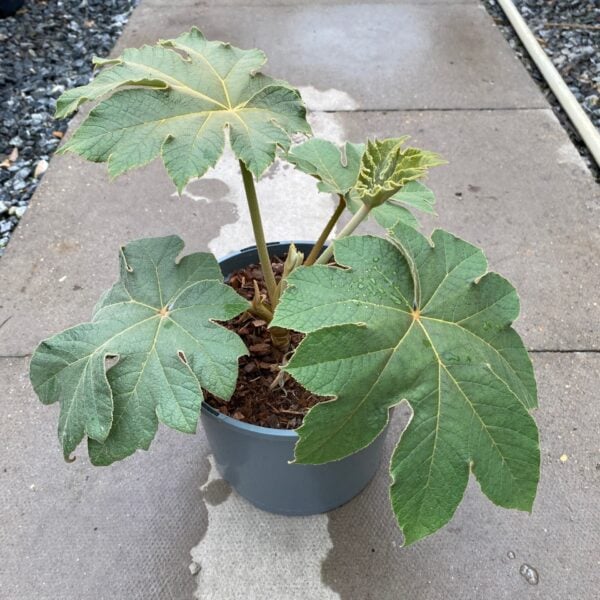Tetrapanax papyrifera 'Rex'
A Fatsia japonica on steroids. Huge leaves, wonderfully eye catching and one of the most exotic plants in a shop full of exotic plants. In all but the mildest and most sheltered garden (if your phone number starts 0207, we’re talking about you), the leaves tend to get frost damaged in winter and best to remove them – but the plants are hardy. They start growing when it’s still quite cool in spring so winter is short for a Tetrapanax.
They grow fast (3ft in a year) and send up suckers so you end up with a little thicket of Rice Paper plants. Thin them as required and cut them down as required. The trunks and leaves have powdery stuff all over them (indumentum) that some find quite irritating. If you’re prone to irritants, when hacking and hewing amongst your Tetrapanax, wear a dust mask (it get’s in the throat) and roll your sleeves down to protect your forearms. No lasting damage.
Avoid windy sites to avoid damage to the leaves which can grow to 3ft across. Comparisons to Fatsia japonica are reasonable (they’re closely related) but this prefers full sun to shade – as opposed to Fatsia that likes shade. In sheltered gardens in central London, I’ve seen this reach 25ft. This is unusual.
Fast and easy and reliable and exotic but they deserve a bit of tidying up from time to time. Mostly removing old leaves, sometimes cutting them down to a suitable size (they produce new shoots from below the cut). This is a variable plant. The best type we ever had was a form from Kew Gardens with deeply folded leaves but unfortunately only hardy in central London and such places. This form (‘Rex’) hits the right spot – good looking but also reasonably hardy.
Propagated by division or micropropagation.
Showing the single result













